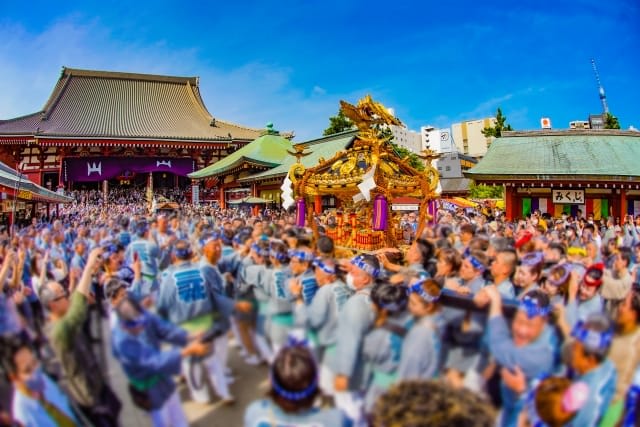Fushimi Inari Shrine Highlight and History! Discover Hidden Gems Surrounding Fushimi Inari Taisha
Kyoto, a city popular for its beautiful cityscape and the ability to experience Japan's long-standing history. From 794 to 1868, Kyoto served as the capital of Japan and the residence of the emperor for an extended period. Throughout this long history, Kyoto's unique elegant culture developed and has been passed down to the present day.
There are over 2,000 shrines and temples within Kyoto Prefecture, and 17 spots are registered as World Cultural Heritage sites, including "Kiyomizudera" and "Daigoji."
This time, we will introduce one of the most famous shrines among the numerous shrines and temples, "Fushimi Inari Taisha." With over 1300 years of history, it is famous for having numerous traditional shrine gates called "Torii," which is known to every Japanese person.
To help you fully enjoy Fushimi Inari Taisha, we will introduce the highlights and points to note in detail.
If you'd like to explore hidden routes of Fushimi Inari with a local guide, I recommend MagicalTrip's "Fushimi Inari Hidden Hiking Tour".

Additionally, Fushimi is famous for sake, and MagicalTrip also offers the "Kyoto Sake Brewery & Tasting Tour in Fushimi" that lets you fully experience Fushimi's sake culture, so please check it out.
Table of Contents
・A Brief History of Fushimi Inari Taisha
・The Charm of Fushimi Inari Mountain
・Must-see Spots of Fushimi Inari Mountain Area
・Is It Worth Exploring to the Summit of Fushimi Inari?
・How to Efficiently Tour the Highlights of Fushimi Inari Taisha
・"Fushimi Inari Hidden Hiking Tour" By Magical Trip
・Access of Fushimi Inari Taisha
・2 Recommended Tourist Spots to Visit Along with Fushimi Inari Taisha
・Points to Note When Visiting Fushimi Inari Taisha
Related Article
・Fushimi Sake Guide: A Comprehensive Introduction to Kyoto's Famous Sake District
Beyond its shrines, the Fushimi area is famous for its sake (Japanese rice wine). For those interested in enjoying exceptional sake in Fushimi, which ranks among Japan's top 3 sake-producing regions, please check out this article as well.
A Brief History of Fushimi Inari Shrine
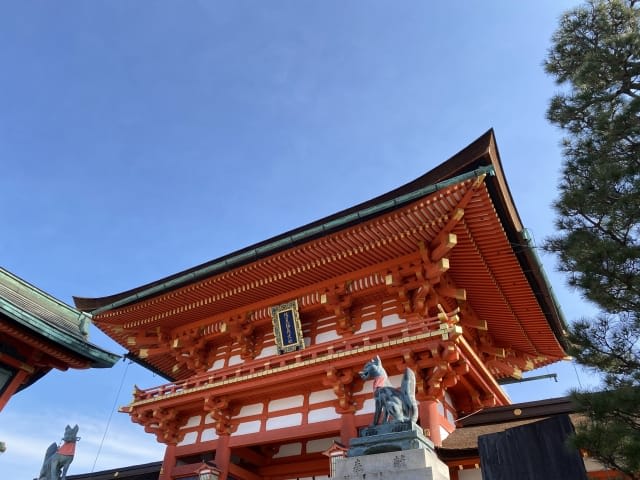
Fushimi Inari Taisha was founded in 711, even before Kyoto became the capital.
The name "Inari" is said to come from the phrase "Ineganaru," which means abundant harvest, indicating that it was initially worshipped as a god of agriculture. Over time, in addition to the original worship, it is now revered as a god of prosperity in business and family safety.
In fact, there are about 30,000 "Inari Shrines" throughout Japan, and Fushimi Inari Taisha is considered their origin.
Fushimi Inari Taisha was once destroyed by civil war in 1468. It was later rebuilt with donations from across the country, and it is said that traveling around the country to seek donations influenced the spread of Inari shrines nationwide.
The Charm of Fushimi Inari Mountain
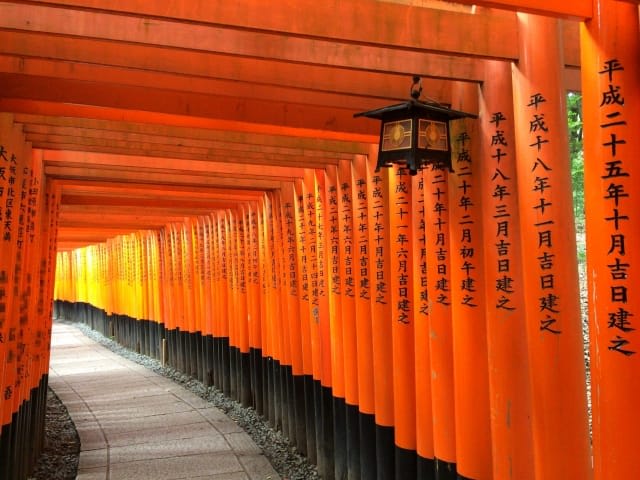
As a Kyoto-based tour guide, I have introduced the charms of Fushimi Inari Shrine to numerous foreign tourists. This sacred Inari mountain, located at the southernmost point of the 36 eastern hills of Kyoto, has been a focus of people's faith for centuries as a 233-meter-high sacred peak.
Founded in 711, Fushimi Inari Shrine boasts over 1,300 years of history as the head shrine of about 30,000 Inari shrines nationwide. Known for its blessings in business prosperity and bountiful harvests, it's an important place that I visit every year for the New Year's prayers.
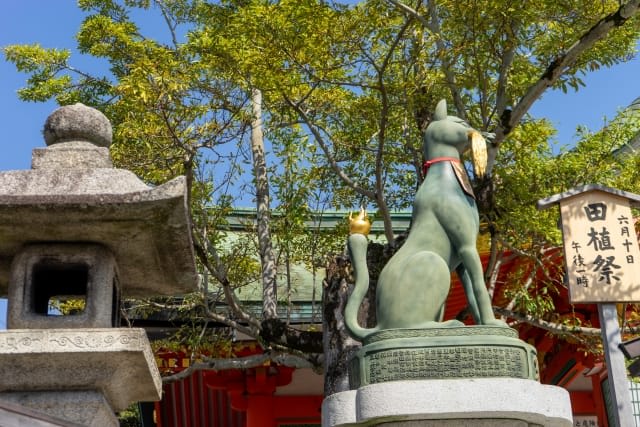
The thousand torii gates on the grounds are breathtakingly beautiful. The tunnel of vermilion torii gates, created by donations from worshippers and businesses, has become a symbol of the shrine. I visit every season to discover new expressions, especially when illuminated by the morning or evening sun, which is breathtakingly beautiful.
Numerous small shrines are scattered throughout Inari mountain, and the path surrounded by rich nature makes you forget the hustle and bustle of the city. The view from Yotsutsuj is particularly recommended, and it's my favorite spot as a scenic viewpoint overlooking the entire Kyoto city.
Good accessibility is also one of its charms. It's within walking distance from JR Inari Station and easily accessible from Kyoto city. I especially recommend visiting early in the morning when there are fewer tourists, allowing for quiet worship in a sacred atmosphere.
Must-see Spots of Fushimi Inari Mountain Area
The Fushimi Inari Shrine mountain area has many highlights beyond the thousand torii gates. I'll introduce some especially recommended spots that I've discovered over many years.
Fushimi Inari Taisha Shrine
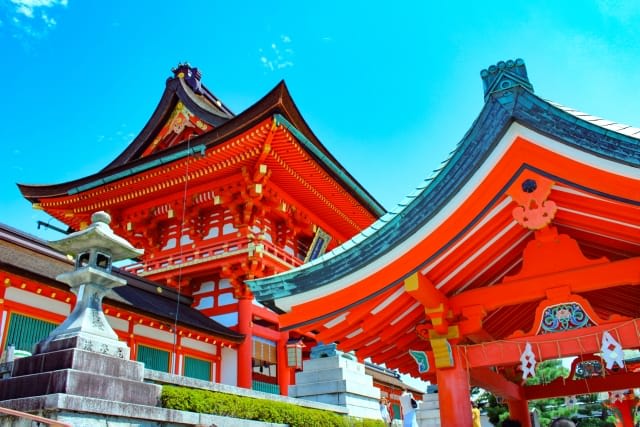
Fushimi Inari Shrine is widely worshipped as the head shrine of all Inari shrines in Japan, especially as the deity of business prosperity and bountiful harvests.
About 10,000 vermilion torii gates stand on the grounds, creating a mystical atmosphere like another world. All these torii gates were built through donations from worshippers and businesses.
What impressed me most was the sight of the thousand torii gates illuminated by the morning sun. The light shining through the tunnel of vermilion torii gates creates a truly divine spectacle.
Also, the grounds are surrounded by rich nature, allowing you to stroll leisurely, forgetting the hustle and bustle of the city. Especially as you climb the mountain path, the quietness gradually increases, allowing you to experience a deeper sacred atmosphere.
Other Shrines and Spots in Fushimi Mountain
Beyond the thousand torii gates, there are many hidden attractive spots that few tourists visit. I'll introduce some special places I've discovered through years of experience.
Okumiya Hōhaijo of Fushimi Inari Shrine
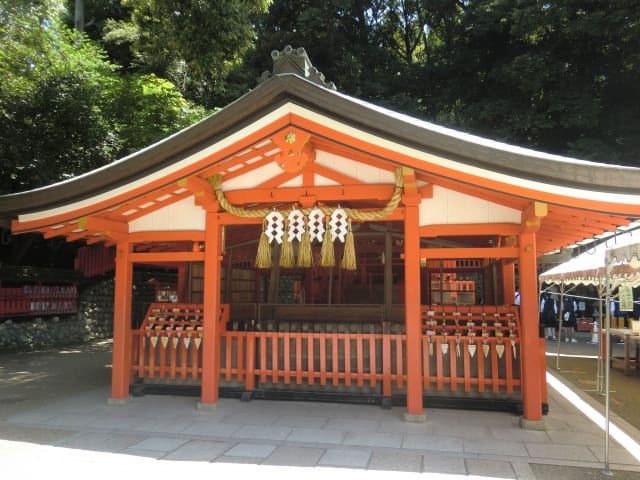
The Okumiya Hōhaijo is a special worship place located beyond the thousand torii gates. Created in the Muromachi period, this place has been carefully preserved to this day as an important shrine for worshipping the deities of Inari mountain. Surrounded by silence, it provides a special experience for visitors.
Easily accessible on foot from the main shrine, and combined with the surrounding rich nature, it's also ideal as a rest spot during hiking.
I especially recommend visiting in the early morning or evening when there are fewer people, allowing you to feel a deeper spirituality.
Omokaru Stone

The Omokaru Stone is a mysterious stone used to divine the fulfillment of wishes. You can lift the stone in front of a lantern while making a wish, and divine whether your wish will come true based on its weight. I've tried it several times, and strangely, the same stone can feel different in weight at different times.
Located just beyond the thousand torii gates, near the Okumiya Hōhaijo, it's a spot where many worshippers stop by.
It's also popular among foreign tourists, and I often see people seriously lifting the stone, believing their wishes will come true.
Ichinomiya Peak
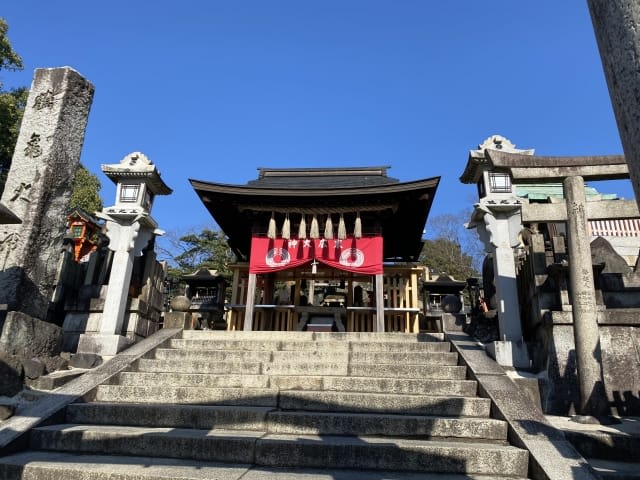
Ichinomiya Peak, the highest point of Fushimi Inari mountain at 233 meters above sea level, is a sacred place enshrining Suehiro Ōkami. What I particularly like is the view from the summit on a clear day.
The panoramic view of Kyoto city makes you forget the fatigue from climbing.
As a hiking course, it takes about an hour and is a distance that even beginners can enjoy with moderate exercise. When I guide friends, I often receive comments like "It was easier to climb than I expected." There's also a rare self-service fortune slip spot at the summit where you can try your luck.
Mitsurugi Shrine
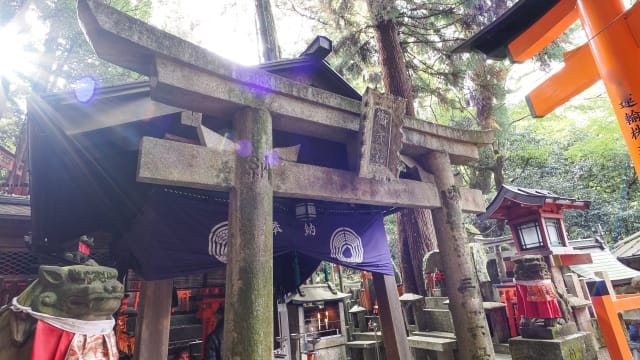
Mitsurugi Shrine, located just before the summit of Inari mountain, is a historic shrine enshrining Tamayorihime-no-mikoto. Particularly noteworthy is the "Thunder Rock" near the shrine, which has long been associated with legends of lightning strikes.
This Thunder Rock is deeply connected to ancient mythology, and when I guide foreign tourists, many are moved by how close they feel to the world of myths.
Located along the path leading to the summit, it's an ideal spot to stop by during hiking. You can calm your mind in a sacred atmosphere surrounded by silence.
Yakuryoku Shrine
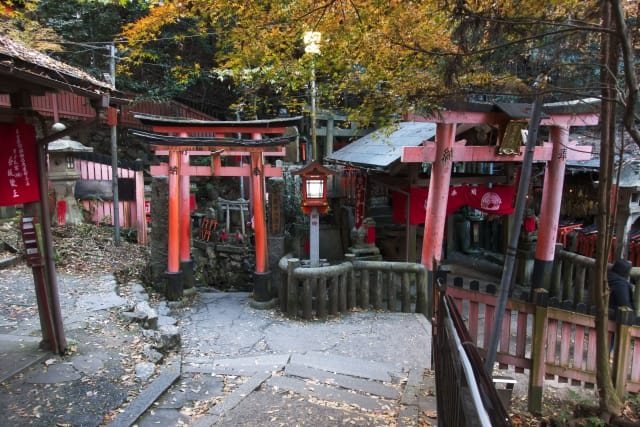
Yakuryoku Shrine is known as the deity of health and medicine, and is famous for being frequently visited by Kabuki actors. What I particularly like is the rare stone statue of a parent and child fox near the shrine. The image of the parent and child foxes, messengers of the Inari shrine, warms the hearts of visitors.
A characteristic place of this shrine is the "Yakuryoku Waterfall," where you can experience a simple waterfall meditation. Also, you can draw sacred water from a hand-pump well, and many worshippers visit to recharge their energy. Located in an ideal location between Yotsutsuj and Ichinomiya Peak, it's a place you can easily stop by during hiking.
View from Top of the Mountain
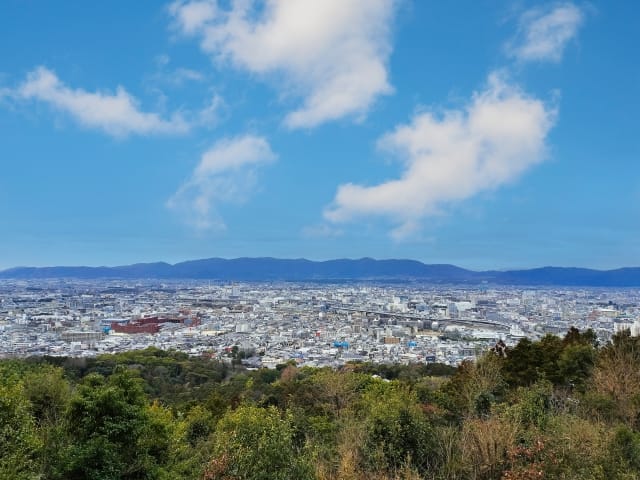
The view from the summit of Fushimi Inari mountain is a spectacular sight that captivates my heart no matter how many times I visit. The view overlooking Kyoto city is especially wonderful on clear days, allowing you to see from the eastern mountains to the city center, and even as far as Mt. Hiei in the distance.
The area around the summit is surrounded by rich nature, providing a quiet space away from the hustle and bustle of the city. When I bring people on guided tours, many are moved by the "different air," taking deep breaths.
If you're interested in discovering the hidden tourist spots of the Fushimi area, we highly recommend joining the "Fushimi Inari Hidden Hiking Tour." With expert guides who know the area inside and out, you'll explore often-overlooked spots around the Fushimi Inari Shrine complex while listening to their informative commentary.
Since the guides also explain Japanese traditions and culture, even first-time visitors to Japan can fully appreciate and deeply enjoy the wonders of Fushimi Inari.
・Fushimi Inari Hidden Hiking Tour
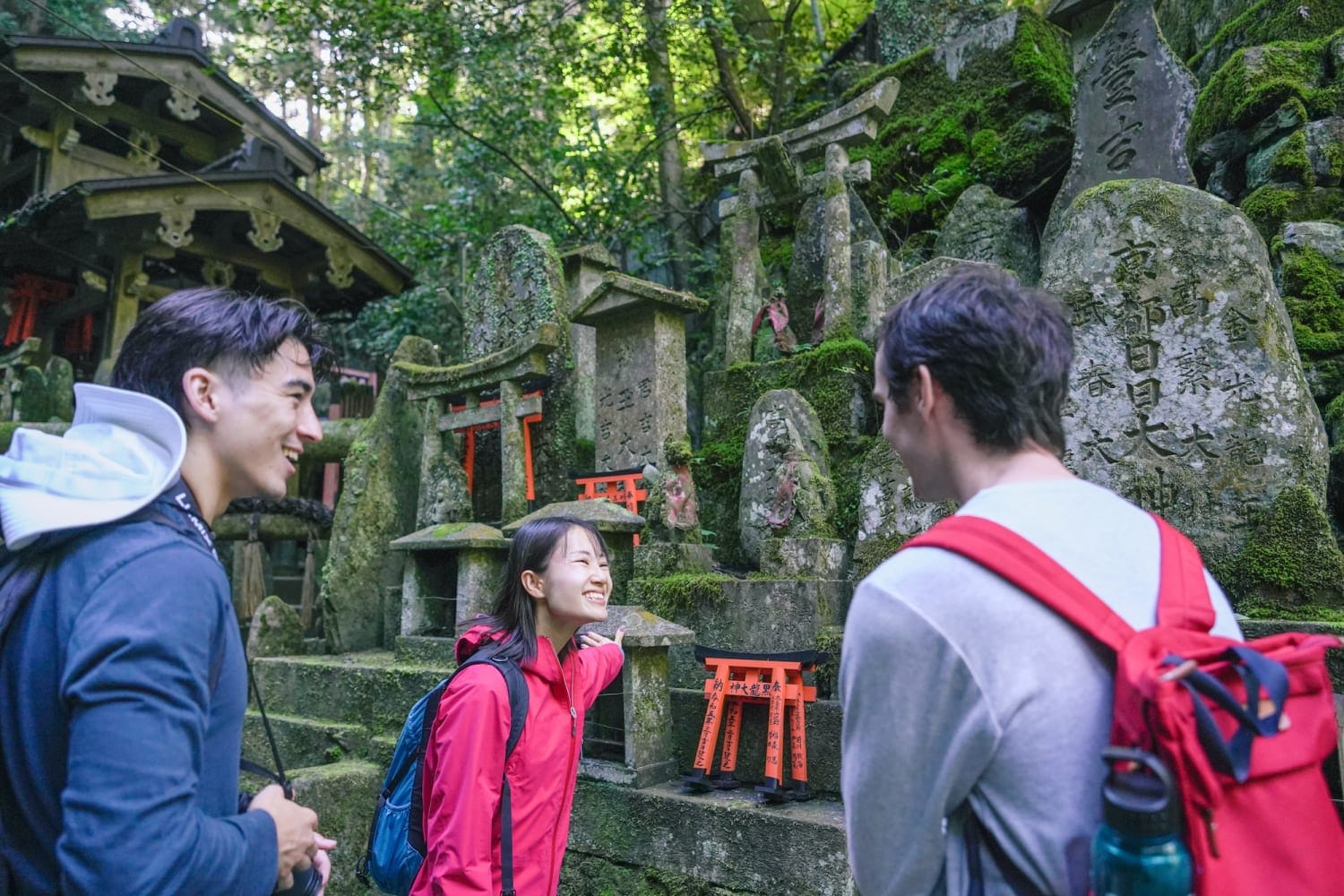
Is It Worth Exploring to the Summit of Fushimi Inari?
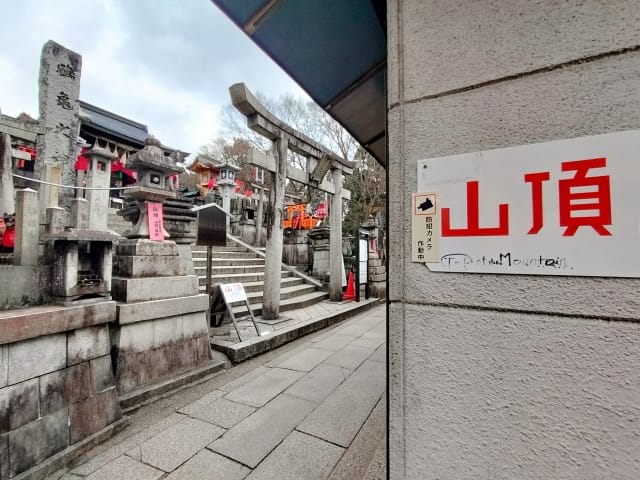
I often get asked by tourists, "Is it worth spending two hours round trip to climb to the summit when there are many other tourist spots in Kyoto?" Indeed, many people turn back at the entrance of the mountain where the thousand torii gates and the main shrine are located.
I myself used to be satisfied with just seeing the thousand torii gates and going home. However, when I once extended my visit to the summit, my thoughts completely changed. I regretted not coming earlier. Not only is the view from the summit spectacular, but there are also numerous hidden sights along the climbing path, each with its own unique charm.
Particularly impressive is the changing atmosphere as the altitude increases. Unlike the bustling foot of the mountain crowded with tourists, silence and sacredness increase. Also, unexpected encounters with small shrines, fox statues, and warm greetings from locals along the way are part of the charm of climbing to the summit.
How to Efficiently Tour the Highlights of Fushimi Inari Taisha
source: Official website
Fushimi Inari Taisha is filled with several Important Cultural Properties and attractive spots. Therefore, it takes time to tour everything, including Mount Inari. It's recommended to plan your worship route considering time and physical stamina.
We will now propose two courses.
One is a course that selects essential representative spots to visit without spending too much time. The other is a course that fully enjoys Fushimi Inari Taisha, covering the entire area including Mount Inari.
Both are sure to result in a fulfilling visit.
"Time-Saving Course" Covering Key Points Quickly
First, we'll introduce a course that covers must-see spots in 30 minutes. This course goes from the main hall through the Senbon Torii to the Okusha Houhai-sho where the Omokaru Stone is located. The Okusha Houhai-sho was built for "Youhai," which means worshipping mountain gods from afar.
Start by passing through the Romon gate and worship at the Inner Worship Hall. After worship, proceed to the left back. Climbing the stairs behind the Torii gate, you'll find about 70 large Torii gates lined up. Past this, you'll arrive at the Senbon Torii.
The sight of vivid vermilion Torii gates standing closely together is much more fantastical and beautiful than in photos, giving you a sense of entering another world.
The Senbon Torii splits into two paths, but unless there are specific left-right instructions during crowded times, you can choose either path.
After passing through the Senbon Torii, you'll arrive at the Okusha Houhai-sho where the Omokaru Stone is located. Here, worship the mountain gods from afar, then return by passing through the Senbon Torii again.
"Leisurely Course" Conquering the Highlights of Mount Inari
Next, we'll introduce a course that lets you take your time to see the highlights of Mount Inari, where Fushimi Inari Taisha is located. Touring the entire mountain for worship is called "Oyama Meguri." The route is about 4 kilometers long and takes about 2 hours. While mountain climbing equipment isn't necessary, please wear comfortable shoes, easy-to-move clothes, and bring sufficient water.
The Oyama Meguri starts after passing through the Senbon Torii. From the Okusha Houhai-sho where the Omokaru Stone is located, you'll climb stone steps and slopes. The atmosphere changes dramatically here, and you can feel the quietness of nature.
"Yotsutsuji," located midway along the path, offers a good view and has a tea house where you can rest while overlooking southern Kyoto city. The path splits from here, but whichever way you go, you'll make a loop and return to Yotsutsuji.
To reach the "Ichinominekamisha" at the mountain peak, there's a series of steep stairs at the end. Located at an altitude of 233m, it's the highest point of Mount Inari. There are also shrines and shops scattered between Yotsutsuji and the peak, so you can enjoy the Oyama Meguri at a leisurely pace with breaks.
Recommended: Take a Break at "Inari Saryo"
When descending from Mount Inari, it's recommended to take a break at "Inari Saryo." This is a rest area where you can see cherry blossoms in spring and autumn leaves in fall, and enjoy sweets made by a long-established Japanese tea shop.
You can taste rich matcha ice cream and parfaits typical of Kyoto, as well as fragrant matcha and Japanese sweets.
These routes represent efficient ways to enjoy Fushimi Inari Mountain based on my personal experience.
However, these days there are so many tourists, and the main routes are always crowded - it's true that the crowds can be exhausting. For times like these, I recommend MagicalTrip's "Fushimi Inari Hidden Hiking Tour" where you can enjoy the "hidden paths" with a local guide.
Related Article
・The 7 Best Trails & Hikes in Kyoto! Enjoy Scenery and Amazing Nature
If you enjoy hiking and nature, check out this article as well. I've carefully selected and featured recommended natural spots that I discovered through my research in 2024.
"Fushimi Inari Hidden Hiking Tour" By Magical Trip

I recommend a 3-hour hiking tour that takes you through back roads of Fushimi Inari that most tourists don't know about. This popular tour ranked 3rd in TripAdvisor's tour rankings for 2024, priced at $64.84 (about 9,500 yen) per person.
The charm of this tour is that you can walk through hidden bamboo groves and nature where there are few general tourists. You can enjoy taking photos in a quiet and calm atmosphere while visiting hidden spots that I've discovered over more than 10 years.
Starting from Tofukuji Station, we pass through local residential areas and small shrines, progressing along hidden mountain paths leading to the mountain.
As a small-group guided tour, you can enjoy it in a friendly atmosphere as if you're out with friends. It's popular with solo travelers, couples, and families alike. Also, cancellations are free up to 24 hours before the tour starts, and date changes are possible. In case of disasters such as typhoons, you'll be contacted by the day before, and there's a reassuring system where you'll receive a full refund.
For more details: Fushimi Inari Hidden Hiking Tour
Access of Fushimi Inari Taisha
<Fushimi Inari Taisha>
Address: 68 Fukakusa Yabunouchicho, Fushimi Ward, Kyoto
Access: Right at JR "Inari Station"
7 minutes walk from City Bus "Inari Taisha-mae"
5 minutes walk from Keihan Electric Railway "Fushimi Inari" Station
Hours: No closing time
Prayer and service hours 8:30-16:30
Closed: None
Phone: 075-641-7331
Admission: Free
Official website
If you are considering visiting Kyoto , check the two articles below! I summarized how and where you can enjoy Kyoto as much as possible.


And, If you want to avoid crowd, I strongly recommend visiting Fushimi Inari Taisha early in the morning.

2 Recommended Tourist Spots to Visit Along with Fushimi Inari Taisha
Here, we'll introduce two recommended tourist spots that you can enjoy along with your visit to Fushimi Inari Taisha. Both are very popular among domestic and international tourists, filled with charms typical of Kyoto.
"Tofukuji," a Zen temple representative of Kyoto surrounded by maple trees, is a temple full of beautiful charms that shows different expressions each season. "Daigoji," registered as a World Heritage site, is known for its numerous national treasures and important cultural properties.
These are easily accessible from Fushimi Inari Taisha, and you can move smoothly by taxi. Enjoy the unique charms of each tourist spot.
"Tofukuji," One of Kyoto's Finest Autumn Foliage Spots
source: Official website
"Tofukuji," a temple of the "Zen" Buddhist sect that emphasizes seated meditation practice, is widely known for its beautiful autumn foliage. Another feature is its building, which is one of the largest Zen temples. It houses historical buildings designated as Important Cultural Properties and over 5,000 cultural properties including National Treasures.
There's a ravine crossing the temple grounds from east to west, with a stream flowing through it. The view from three bridges over this ravine is breathtakingly beautiful. The ravine is covered with maple trees, which turn into a vivid autumn foliage in fall, creating a spectacular landscape. The combination of historical buildings and beautiful nature continues to fascinate visitors.
The four gardens in the "Honbo" (main priest's quarters) are also beautiful and recommended for tourists. Along with the autumn foliage, you can enjoy Japanese-style gardens skillfully created using moss, rocks, and stones.
<Tofukuji>
Address: 778 Honmachi, Higashiyama Ward, Kyoto
Access: 10 minutes walk from JR/Keihan Electric Railway "Tofukuji" Station
8 minutes walk from Keihan Electric Railway "Tofuku-ji" Station
10 minutes walk from City Bus "Tofukuji"
Hours: 4/1-10/31 9:00-16:00
11/1-12/1 8:30-16:00
12/2-3/31 9:00-15:30
Closed: None
Phone: 075-561-0087
Admission: Tofukuji Honbo Garden/
Adults 500 yen, Children 300 yen
Tsutenkyo Bridge and Founder's Hall/
Adults 600 yen, Children 300 yen
(Only 11/9-12/1, Adults 1,000 yen, Children 300 yen)
Combined admission ticket/
Adults 1,000 yen, Children 500 yen
(No combined admission ticket from 11/9-12/8)
Official website
"Daigoji," Registered as a World Cultural Heritage Site
"Daigoji," founded in 874, was registered as a UNESCO World Cultural Heritage site in 1994. It's a vast temple that considers the entire Mount Daigo as its temple grounds, and is also known as a famous cherry blossom viewing spot, selected as one of the "100 Best Cherry Blossom Viewing Sites in Japan." In spring, about 700 cherry trees of several varieties bloom, allowing you to enjoy a beautiful pink landscape typical of Kyoto.
The "Gojunoto" (Five-storied Pagoda), built in 951 with a calm atmosphere, is about 38m tall and is said to be the oldest wooden structure in Kyoto Prefecture. At "Sanboin," where most of the buildings are Important Cultural Properties, you can see the traditional architectural style called "Shinden-zukuri" seen inthe late 10th century, as well as a beautiful garden.
The "Reihokan" (Treasure House) stores hundreds of thousands of temple treasures. Every year, some of these are exhibited in rotation during spring and autumn. You can view them along with cherry blossom viewing in the cherry blossom season.
<Daigoji>
Address: 22 Daigohigashiojicho, Fushimi Ward, Kyoto
Access: 15 minutes walk from Subway Tozai Line "Daigo" Station
Kyoto Daigoji Line Bus "Daigoji"
Keihan Bus "Daigoji-mae"
Hours: Summer 9:00-17:00
Winter 9:00-16:30
Closed: None
Phone: 075-571-0002
Admission: Sanboin Garden and Temple Grounds/
Regular period: Adults 1,000 yen, Middle and High School Students 700 yen
Spring period: Adults 1,500 yen, Middle and High School Students 1,000 yen
(Sanboin Garden, Temple Grounds, and Reihokan Garden)
Sanboin Palace Special Viewing/
Regular period: Adults and Middle/High School Students 500 yen
Reihokan Main Building and Heisei Hall Special Exhibition/
Adults and Middle/High School Students 500 yen or more
Official website
Related Article
・Top 9 Best Temples and Shrines; Must-Visit for First-Timers!
Check this out if you're interested in Kyoto's traditions and historic temples and shrines. We introduce 9 must-see temples and shrines that are especially recommended for first-time visitors to Kyoto.
Points to Note When Visiting Fushimi Inari Taisha
It's Very Popular and Always Crowded
Fushimi Inari Taisha is popular among domestic and international tourists, with about 10 million annual visitors. Even outside of events, there are street stalls for visitors, allowing you to enjoy an atmosphere similar to a festival.
Good access from the station is considered one of the factors attracting tourists. Due to the large number of people, it's advisable to use public transportation instead of coming by car.
Also, on this site, you can see predicted crowding data for the area around Fushimi Inari Taisha by date and time. By visiting during relatively less crowded times according to your tourism schedule, you might be able to have a smoother tour.
Follow Shrine Manners and Etiquette

Shrines and temples are sacred places that enshrine gods. Also, because popular places are bustling with many people daily, it's important to follow manners and etiquette when visiting.
By each tourist being conscious of manners and etiquette, we can pass on the beautiful Kyoto with its long history to future generations in its beautiful state.
Optimal manners vary greatly depending on the country and culture. Please learn about Kyoto-specific manners and etiquette beforehand to enjoy the elegant Kyoto.
Manners and etiquette to follow when sightseeing
Wear Comfortable Shoes and Don't Forget to Stay Hydrated
When sightseeing in Kyoto, you'll often visit shrines and temples and move between tourist spots. Most of this movement will be on foot. Enjoy walking around Kyoto to the fullest with comfortable shoes, easy-to-move clothes, and sufficient hydration.
Especially during the scorching summer days, caution against heat stroke is necessary. Check the heat stroke warning alerts and weather forecasts to prevent heat stroke.
Heat stroke warning alerts
Also, there are over 800 free water supply spots in Kyoto city. Japanese tap water is known to be clean enough to drink directly. Bring your own bottle to protect the environment while enjoying Kyoto's tap water.
Free water supply spots in Kyoto city
Fushimi Inari Shrine, with its history spanning over 1,300 years, has long been revered as the head shrine of approximately 30,000 Inari shrines across Japan, drawing worshippers who seek prosperity in business and abundant harvests. From the iconic vermillion-colored Senbon Torii (thousands of torii gates) to the summit at 233 meters above sea level, this sacred space offers endless points of interest.
Visitors can choose between two courses: a shorter 30-minute route covering the Senbon Torii and main shrine area, or a more comprehensive two-hour course that explores the entire Mount Inari. The view of Kyoto city from the summit is breathtaking, and the scenery from Yotsusuji intersection along the way is equally spectacular.
However, as this popular destination attracts 10 million visitors annually, the main routes tend to be consistently crowded. For those seeking a more serene and authentic sacred atmosphere, MagicalTrip's "Fushimi Inari Hidden Hiking Tour" is recommended. Led by experienced local guides, this tour takes you through less-traveled back paths and quiet bamboo forests, allowing ample time for photography in a peaceful setting.
Why not experience this special journey at Fushimi Inari Shrine, where you can connect with Japanese traditions and culture that have been preserved for over a millennium?





